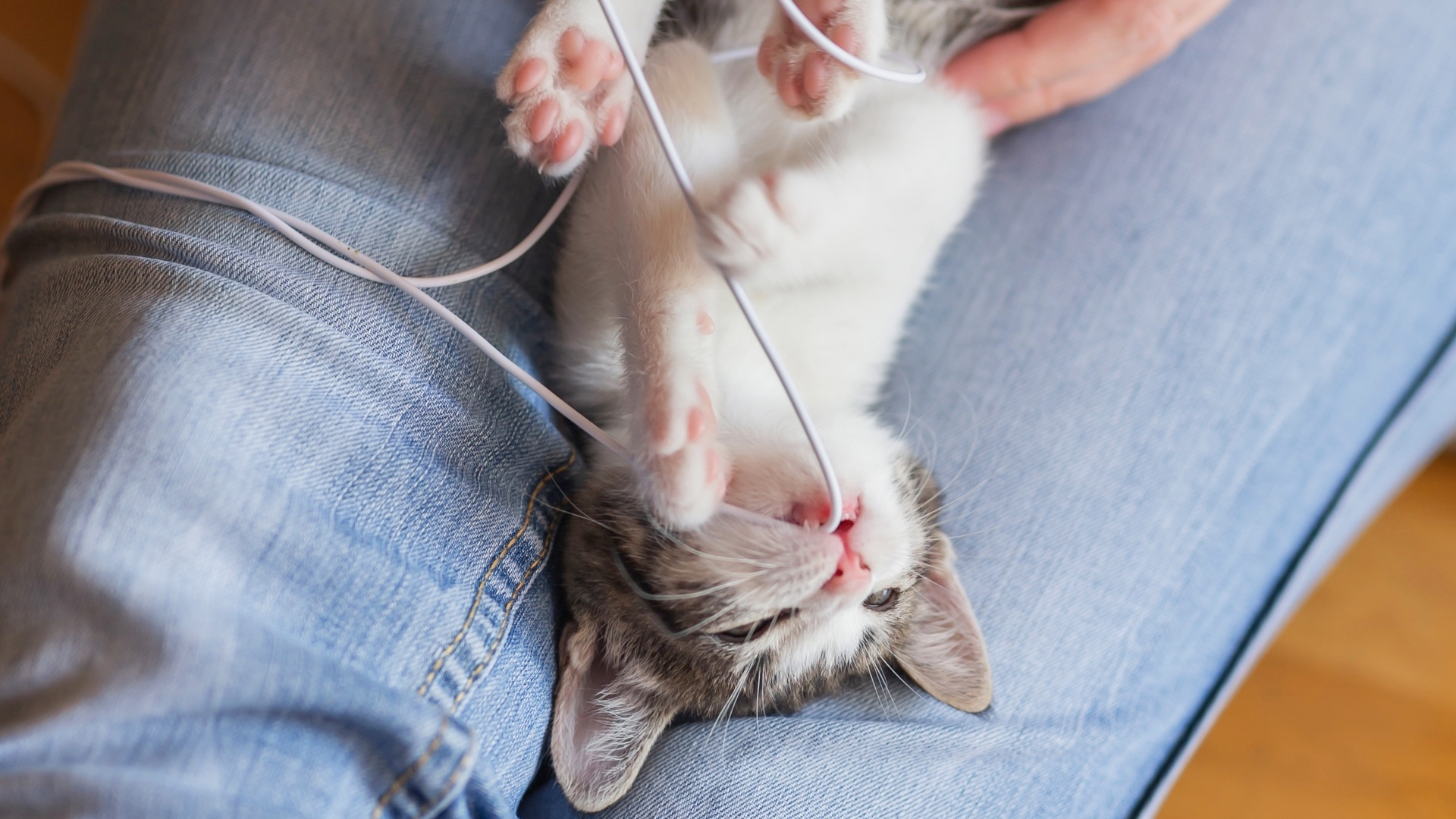Does Your Cat Chew Dangerous Objects?
Summary:
There are medical as well as behavioral reasons why cats chew, lick, or eat non-food objects. A kitten, just like a baby, will take everything into her mouth just out of curiosity. It is thought, though not scientifically proven, that an adult cat who persists on chewing and eating a non-food item may be lacking certain nutrients in her diet.
There are medical as well as behavioral reasons why cats chew, lick, or eat non-food objects.
A kitten, just like a baby, will take everything into her mouth just out of curiosity. A swallowed marble, paper clip, poisonous plant, or rubber balloon can be lethal for a kitten. And, just like a baby, items that tempt a kitten must be put out of her reach, and she must be watched carefully.
It is thought, though not scientifically proven, that an adult cat who persists on chewing and eating a non-food item may be lacking certain nutrients in her diet. It may be a vitamin imbalance. As a precaution, always choose a quality food for your cat, one recommended by your veterinarian.
A cat who chews and eats paper, wood, or leather may have internal parasites who are sucking certain nutrients out of her system. A cat who licks window panes, walls, or cement walkways may be anemic. Chronic intestinal problems and liver and kidney disease will sometimes cause a cat to eat non-food items. In all these situations, see your veterinarian immediately.
Some cats chew and eat non-food objects because they are just simply bored and need something to do. Provide more playtime.
A cat that chews or sucks on clothing – wool is a favorite of some cats, especially Siamese – may have been weaned too early. The wool sucking produces a smell similar to the wet fur around the mother's nipple. As long as this material is not being swallowed, let this cat have her security blanket. She may break herself one day or she may not. She can still be a wonderful companion.
Cats who chew electrical cords are flirting with danger. Cover these cords with duct tape. Coat them with one of the commercial bitter products or tabasco sauce to discourage chewing. A number of household plants are poisonous to cats. The worst among them are dieffenbachia which can cause temporary paralysis of the throat, and philodendron which can make a cat's throat and tongue swell enough to cause asphyxiation. Among the many varieties of other plants, some found outside, are azaleas, ivy, mistletoe, most bulbs, buttercups, chrysanthemums, crocus, holly, lily of the valley, marigold, potato, rhubarb, sweet peas, and wisteria.
You can discourage your cat from eating your household plants by baiting a leaf or two with tabasco sauce. You might try popping a balloon near your cat followed by hanging a few balloons from the plant she has been chewing. The best thing to do for your inside cat is to grow a garden for her to chew on. Plant catnip or wheat and parsley. You can purchase "ready-to-grow" gardens from your local pet supply store.
In the long run, the best way to train your cat is by giving her a verbal "NO" for chewing and swallowing anything but her food. Follow this reprimand with a food treat and praise: "Good Kitty!"


